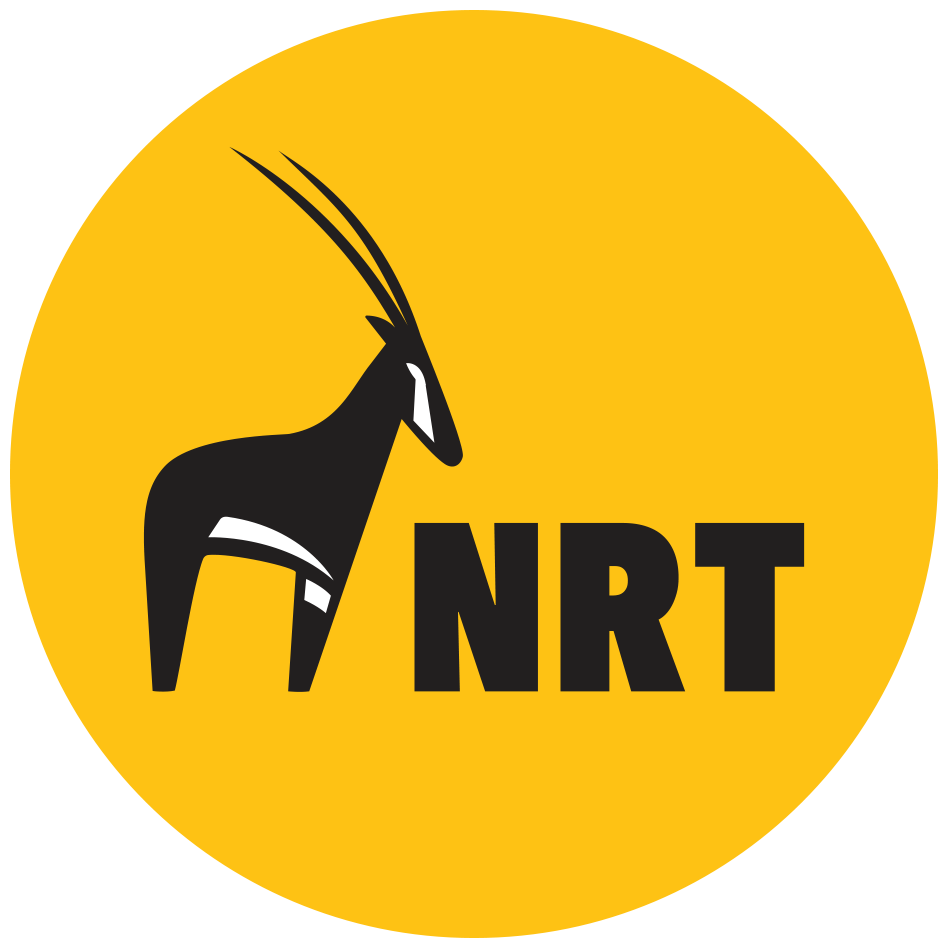Tracking Towers; Satellite monitoring for northern Kenya’s endangered reticulated giraffe
Photo: Kieran Avery
The biggest giraffe satellite tagging project ever is underway, as 21 endangered reticulated giraffe (Giraffa reticulata) were recently fitted with GPS satellite trackers in NRT member conservancies at the end of September 2019. In total, 28 animals were tagged as part of this project, which will provide important data on giraffe home ranges, movements, poaching and conflict with humans - very little of which has ever been quantified previously. It is hoped that community conservancies, private and government wildlife reserves, and the Kenya Wildlife Service (KWS) will be able to use this information to inform effective conservation strategies, and collaborate on giraffe protection initiatives on the ground. Five NRT member community conservancies (Westgate, Sera, Biliqo, Melako and Kalama) have partnered with NRT, the Giraffe Conservation Foundation (GCF), San Diego Zoo Global (SDZG), the Kenya Wildlife Service (KWS), and Shaba and Samburu National Reserves on this landscape-level conservation project.
Photo: Kieran Avery
A group of giraffe is often referred to as a ‘tower’. But across Africa, these magnificent towers are tumbling at a worrying rate. According to GCF, giraffe numbers on the continent have plummeted by around 30% since the 1980s, when there were an estimated 155,000 animals roaming across west, central, east and southern Africa. Today, there are approximately 111,000. In some areas where giraffe once thrived, numbers have dropped 95% since the 1980s.
Habitat loss, fragmentation and degradation is blamed for much of this decline. Poaching, disease, war and resource conflict with humans are also significant threats. As the community conservation footprint increases in geography and impact across northern Kenya, there is an urgent and increasing need for accessible data on the behaviour, movements, feeding patterns and threats to endangered species.
The recent satellite tagging mission was conducted using a combination of aerial and ground support. A helicopter was used to tranquillise selected animals, whereafter the ground support team would handle the immobilised giraffe - ensuring its safety and comfort. A mixture of male and female giraffe were tagged in Westgate, Sera, Biliqo-Bulesa, Melako and Kalama community conservancies, as well as Samburu and Shaba National Reserves, and the area around Nalowuon community conservancy, with no injuries or casualties to animals or people.
Photo: Kieran Avery
Even with the most advanced and robust technology, nature will always influence the success of projects like this. Of the 21 giraffe tagged, eight have lost or damaged their devices (through fighting or getting them caught in thick shrub). The remaining 13 devices are transmitting well. There are future plans to re-tag some of these animals, and more giraffe across Kenya, to better support their conservation.
Little is known about the precise home ranges of these giraffe, and being able to map out their movement corridors and primary feeding spots not only helps inform protection frameworks for these areas, but will also provide an insight into just how much space giraffes need.
The data from the GPS satellite trackers – also known as ‘ossi-units’ because they are fitted to the giraffe’s ossicones (horns) – will also reveal how giraffe react to the movements and presence of humans - both in settlements and in nomadism - as well as how they react to changing seasons and vegetation cover.
“This exercise will help communities form a scientific basis to conservation projects,” says Robert Dokole, the head of the ranger team at Melako Community Conservancy. “It is important to merge technology like this with traditional knowledge to create community-owned plans for conservation and land management. This is where community conservancies are so unique and important for the future of Kenya’s endangered species.”
Conservation partners hope to collaborate in the near future to undertake a landscape-level aerial count of reticulated giraffe in the landscape to gauge a more accurate indication of numbers and spatial distribution.



